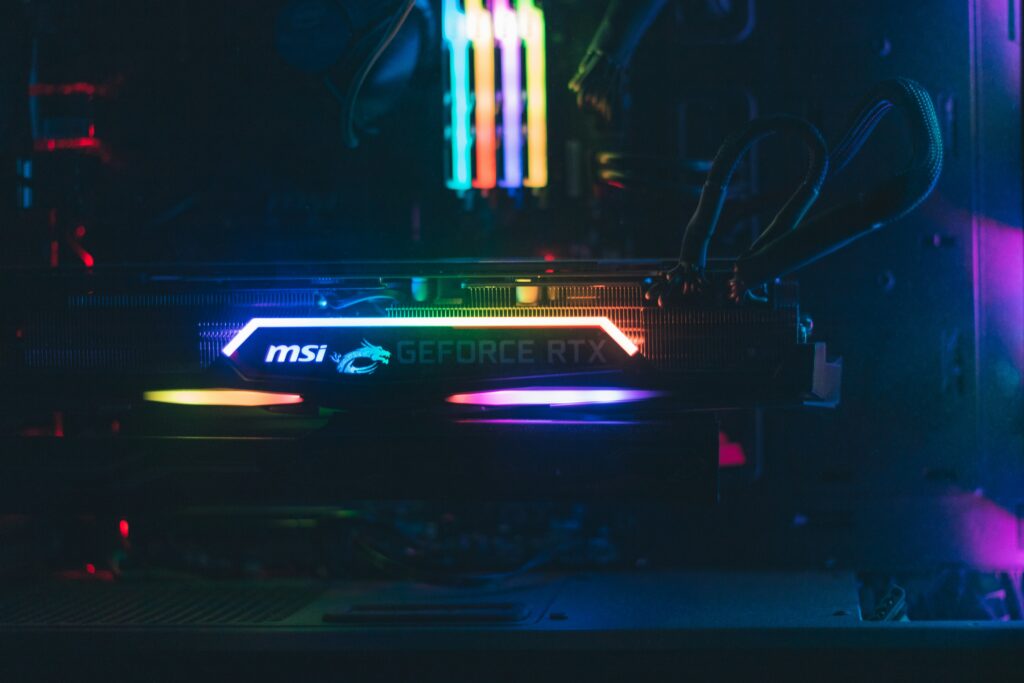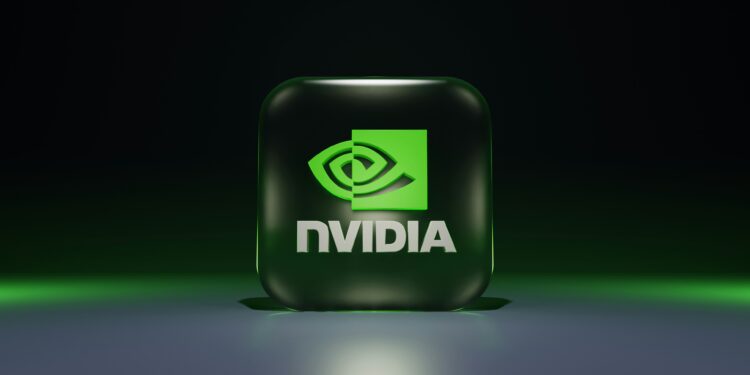NVIDIA Corporation (NASDAQ:NVDA) began life in a modest Sunnyvale office in 1993, when Jensen Huang, Chris Malachowsky, and Curtis Priem set out to solve one problem: how to bring real-time, cinematic-quality 3D graphics to the personal-computer era. That focus yielded the world’s first graphics processing unit in 1999 and instantly made “GPU” part of the technology lexicon. Over the next decade the company’s GeForce, Quadro, and Tesla product lines reshaped gaming, professional visualization, and high-performance computing, while its proprietary CUDA parallel-computing platform created a sticky software ecosystem that turned millions of developers into lifelong customers. By the mid-2010s, researchers training the earliest deep-learning models discovered that NVIDIA’s massively parallel GPUs could accelerate AI workloads by orders of magnitude, thrusting the company into the center of a new industrial revolution.
That early bet on accelerated computing is now paying historic dividends. NVIDIA’s Data Center segment—which barely registered on income statements ten years ago—generated more than $39 billion in the April 2025 quarter alone, powering virtually every hyperscale cloud, Fortune 500 enterprise, and sovereign AI cluster on earth. The launch of the Blackwell architecture in late 2024 has already set a new standard for energy-efficient performance, and the forthcoming Rubin platform, slated for 2026, promises another multiyear leap that competitors are struggling to match. Alongside hardware advances, the company has layered an expanding suite of high-margin software offerings—from DGX Cloud to the Omniverse industrial-simulation platform—cementing CUDA as the de facto operating system of AI and creating recurring revenue streams that reach far beyond chip sales.
Investors have responded by bidding the stock to unprecedented heights. On July 2 2025 NVIDIA’s share price closed at roughly $157, lifting its market capitalization to $3.86 trillion and vaulting it past Microsoft to become the world’s most valuable publicly traded company. That milestone, achieved despite U.S. export curbs that sidelined billions in China sales, underscores both the global scramble for AI compute and NVIDIA’s near-monopoly position in the highest-end silicon. CEO Jensen Huang, who still owns about three percent of the firm he co-founded, has seen his personal net worth surge to more than $137 billion—an emblem of the wealth creation tied directly to NVIDIA’s outsized role in the digital economy’s next chapter.
Yet the company’s ambitions stretch well beyond data-center chips. NVIDIA is scaling its Drive platform for autonomous vehicles, Jetson modules for edge AI and robotics, and Grace Hopper superchips that fuse CPU and GPU silicon to conquer memory-bandwidth bottlenecks. Partnerships with governments from Saudi Arabia to Taiwan are positioning its hardware as critical national infrastructure, while an ecosystem of more than 4.5 million developers ensures that each successive architecture is greeted by a ready-made customer base. With generative AI adoption still in its infancy and analysts forecasting a multitrillion-dollar spend on AI infrastructure through 2030, NVIDIA’s blend of unmatched technology, entrenched software moat, and visionary leadership leaves it uniquely positioned to remain the defining growth story of the decade.
Blackwell and Rubin Architectures: Powering the Future of AI
NVIDIA’s current product roadmap continues to raise the bar across all dimensions of high-performance computing. The recently launched Blackwell GPU architecture, designed to meet the demands of generative AI and advanced data center workloads, has already begun reshaping how hyperscalers deploy computing resources at scale. NVIDIA’s upcoming Rubin platform, projected to launch in 2026 and be more than three times faster, is already drawing enthusiastic projections from analysts. These platforms will allow data centers and sovereign AI infrastructures to run larger models with greater efficiency, minimizing cost while maximizing performance.
What makes these developments more than just technological milestones is the immediate and massive market response. NVIDIA is shipping these chips to hyperscale customers like Amazon Web Services, Google Cloud, and Oracle, who are racing to expand their AI capabilities. Sovereign governments, including Saudi Arabia and Taiwan, are also adopting NVIDIA’s technology for national-level AI systems, ensuring the company remains essential to both private enterprise and global public infrastructure.

CHECK THIS OUT: POET Technologies (POET) Delivers 1.6T Optical Innovation—Is a Massive Revenue Surge Next? and BigBear.ai (BBAI) is Flying Under the Radar—But Not for Long. Here’s Why Bulls Are Piling In.
Financial Performance That Continues to Defy Expectations
NVIDIA’s financial results reflect a company operating on an entirely different level. In Q1 FY2026, the company posted $44.1 billion in revenue—up 69% year-over-year—with data center revenue alone surging to $39.1 billion. Even more remarkable is that this growth came despite U.S. export restrictions on its H20 AI chips to China, which cost the company approximately $8 billion in potential sales. The fact that NVIDIA’s revenue rose so dramatically in the face of such headwinds demonstrates the unrelenting demand for its products and the effectiveness of its global reallocation strategy.
With analysts expecting NVIDIA’s revenues to continue scaling rapidly through the end of the year, many predict the company will soon surpass the $4 trillion valuation milestone. Some estimates even suggest that NVIDIA could reach $5 trillion within the next 18 months as the full scope of enterprise AI investment plays out. As capital continues to flow into generative AI, edge computing, robotics, and autonomous systems, NVIDIA is uniquely positioned to collect value at every layer of the stack—from hardware to software and everything in between.
Jensen Huang: The Visionary Leader Behind a $4 Trillion Giant
No bullish thesis for NVIDIA would be complete without acknowledging the central role of Jensen Huang. His rise to become one of the ten wealthiest individuals on the planet is symbolic of the company’s trajectory. More than just an executive, Huang is regarded as the Steve Jobs of the AI generation—overseeing not only chip design, but also software ecosystems, developer relations, and full-stack innovation that bridges hardware and AI workloads.
Under Huang’s leadership, NVIDIA has been careful not to rest on its laurels. The company is aggressively investing in AI robotics, simulation platforms, autonomous vehicles, and large language model optimization. These moves position NVIDIA not only as the platform on which others build but as an AI application provider itself, thereby expanding its total addressable market far beyond chips and graphics cards.
The Road Ahead: Breaking Records, Redefining Tech
While NVIDIA has now overtaken Microsoft in valuation, it still has one more milestone in its sights: surpassing Apple’s all-time record market cap of $3.92 trillion set in December 2024. Analysts expect this to happen imminently. Both Microsoft and NVIDIA are projected to enter the $4 trillion club before the end of summer 2025, and investor sentiment strongly supports the idea that NVIDIA will continue to climb toward $5 trillion as the dominant AI narrative intensifies.
The market’s belief in NVIDIA is not based on speculation—it is grounded in hard financials, unmatched product leadership, and an ecosystem that includes some of the largest tech companies and governments in the world. From generative AI to sovereign data infrastructure, NVIDIA is no longer just a participant in the AI economy—it is the operating system for the new industrial revolution.
Conclusion: NVIDIA Is the Defining Growth Story of the Decade
The bullish thesis for NVIDIA is clear, compelling, and backed by numbers, strategy, and vision. With generative AI and high-performance computing becoming central to everything from business productivity to national defense, NVIDIA’s dominance is set to persist—and even expand. Its cutting-edge Blackwell and Rubin architectures, sovereign AI integrations, cloud partnerships, and explosive revenue growth put it in a category of its own.
As the company reclaims its title as the most valuable in the world and eyes a $4 to $5 trillion valuation, the opportunity for investors becomes increasingly evident. Jensen Huang’s NVIDIA is not just building chips—it’s building the infrastructure for the future of intelligence. For long-term investors seeking exposure to the epicenter of the AI explosion, NVIDIA remains the definitive high-conviction bet of this decade.
READ ALSO: MicroVision (MVIS): A Top Pick in Autonomous Tech Stocks and Innoviz (INVZ) May Be Severely Undervalued — Investors Shouldn’t Ignore This Stock.






